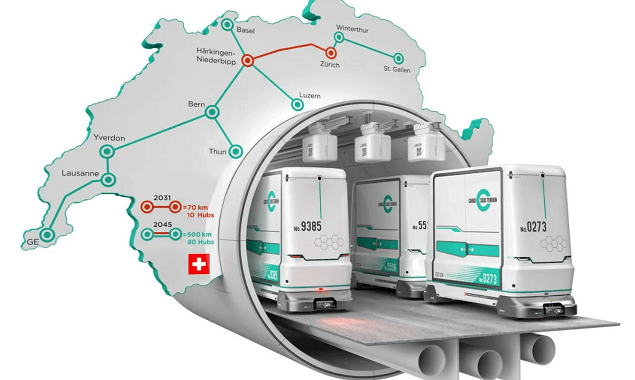
04 Aug Autonomous Underground Cargo System
A lot less technologically optimistic than the Hyperloop-TT Hyperport project, Cargo Sous Terrain looks considerably more likely to happen, with its first 10-stop, 70-km (43-mile) series of underground tunnels scheduled to begin taking cargo in 2031.
The idea is to develop a fully autonomous, zero-emissions transport system for small cargo loads that can take some strain off a road system that’s projected to be smashed with nearly 40 percent more traffic in 30 years’ time. But where Hyperloop-TT’s project aims to fire entire shipping containers around Europe at transonic 1,220-km/h (760-mph) speeds in ultra-low-drag vacuum tubes, Cargo Sous Terrain (CST) is taking a much more humble and achievable approach.
Each tunnel will have a diameter around 6 m (20 ft), and a flat floor divided into three lanes. Along these lanes, platoons of small cargo pods will travel at speeds around 30 km/h (18.6 mph). These pods will be big enough to hold a pallet or two, and there’ll be refrigerated ones available for fresh produce and the like. They’ll drive themselves with electric motors, and they’ll receive power through induction rails.
Pods will be loaded up at above-ground logistics facilities, then lowered down to on/off-ramp sections of the tunnel system on elevators. The outside lanes of the tunnels will be one-way, while the inside lanes can be dynamically configured to prevent traffic jams if a high number of pods are waiting for a single elevator.
